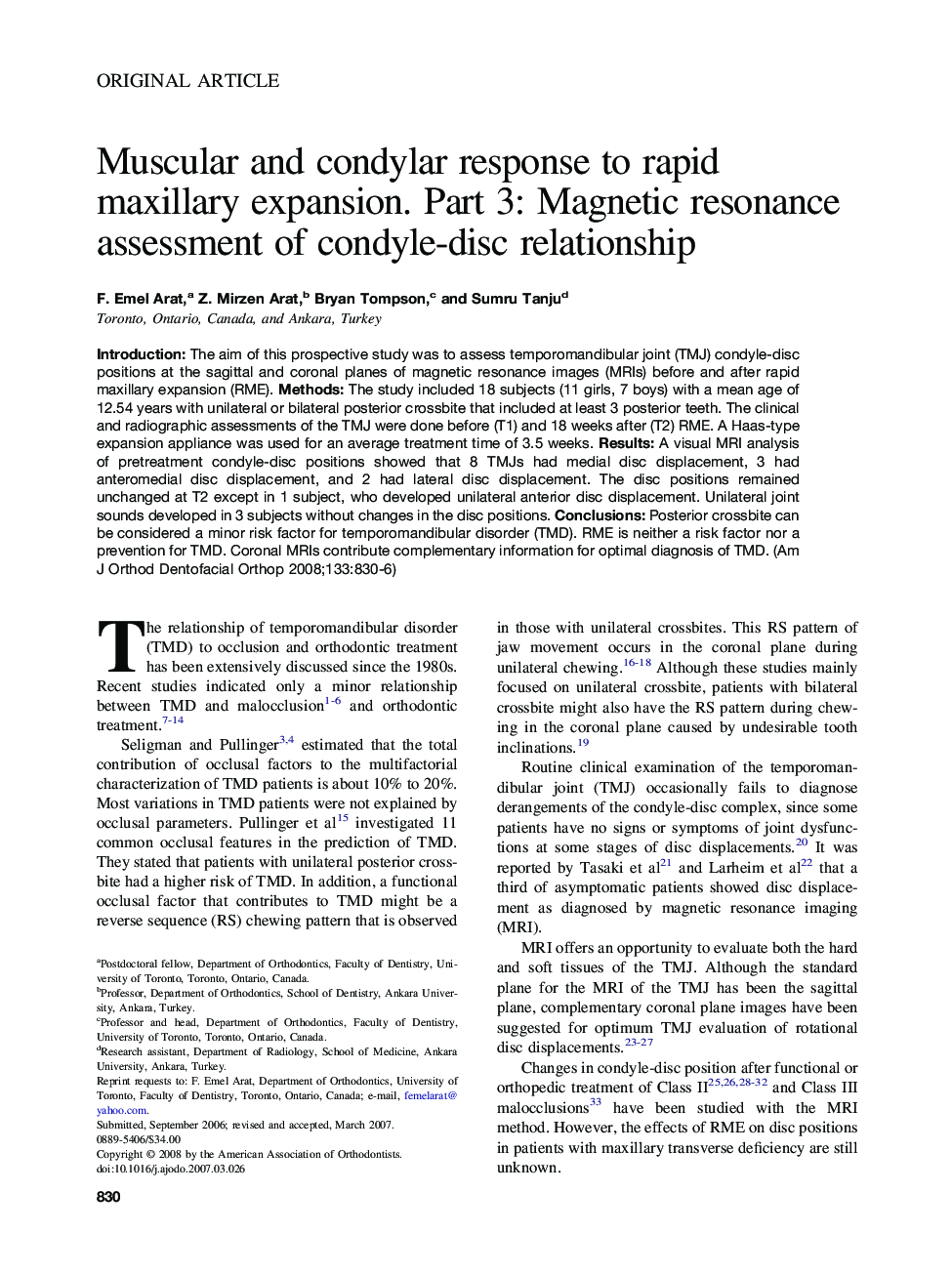| Article ID | Journal | Published Year | Pages | File Type |
|---|---|---|---|---|
| 3119092 | American Journal of Orthodontics and Dentofacial Orthopedics | 2008 | 7 Pages |
Introduction: The aim of this prospective study was to assess temporomandibular joint (TMJ) condyle-disc positions at the sagittal and coronal planes of magnetic resonance images (MRIs) before and after rapid maxillary expansion (RME). Methods: The study included 18 subjects (11 girls, 7 boys) with a mean age of 12.54 years with unilateral or bilateral posterior crossbite that included at least 3 posterior teeth. The clinical and radiographic assessments of the TMJ were done before (T1) and 18 weeks after (T2) RME. A Haas-type expansion appliance was used for an average treatment time of 3.5 weeks. Results: A visual MRI analysis of pretreatment condyle-disc positions showed that 8 TMJs had medial disc displacement, 3 had anteromedial disc displacement, and 2 had lateral disc displacement. The disc positions remained unchanged at T2 except in 1 subject, who developed unilateral anterior disc displacement. Unilateral joint sounds developed in 3 subjects without changes in the disc positions. Conclusions: Posterior crossbite can be considered a minor risk factor for temporomandibular disorder (TMD). RME is neither a risk factor nor a prevention for TMD. Coronal MRIs contribute complementary information for optimal diagnosis of TMD.
